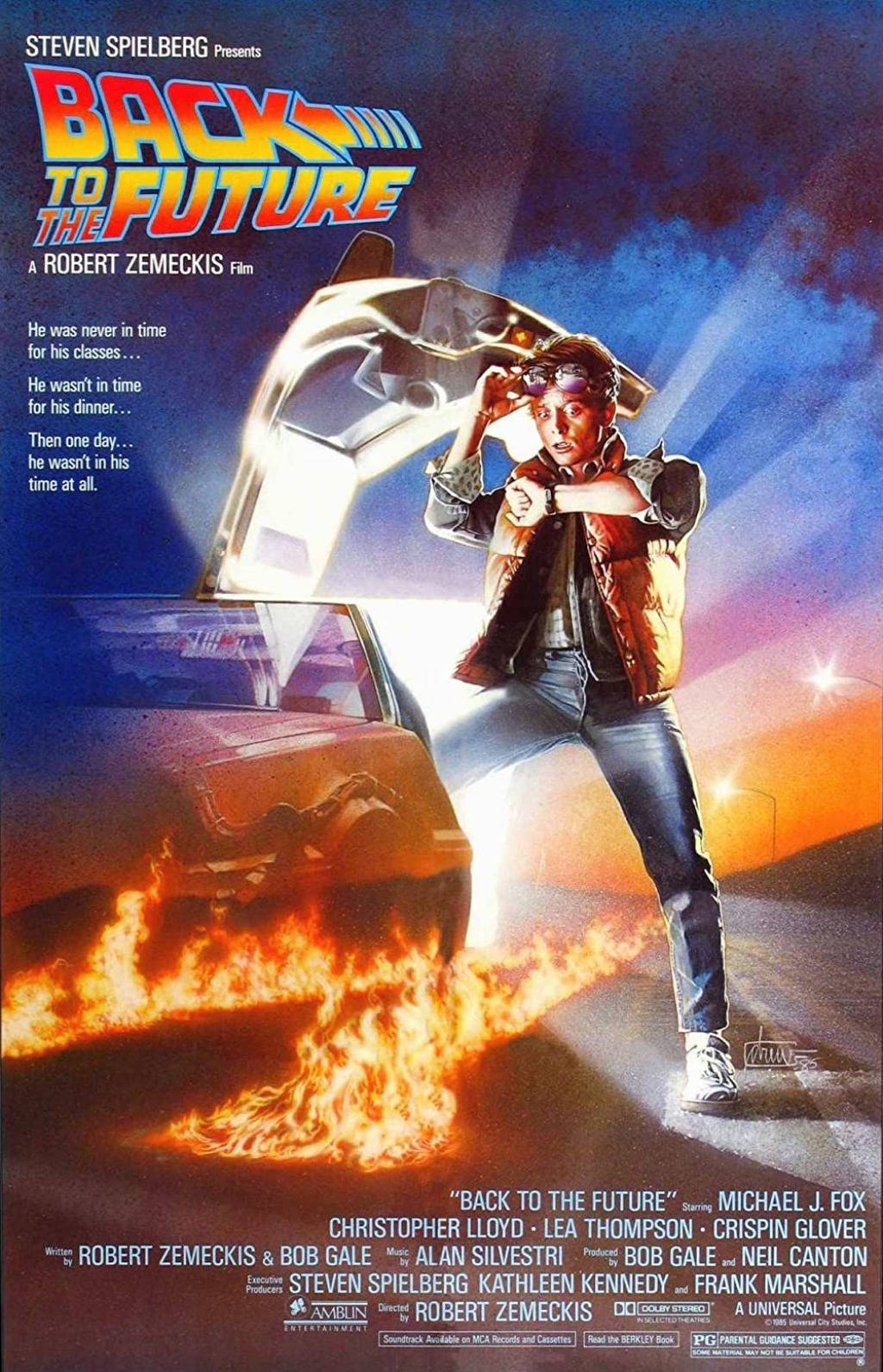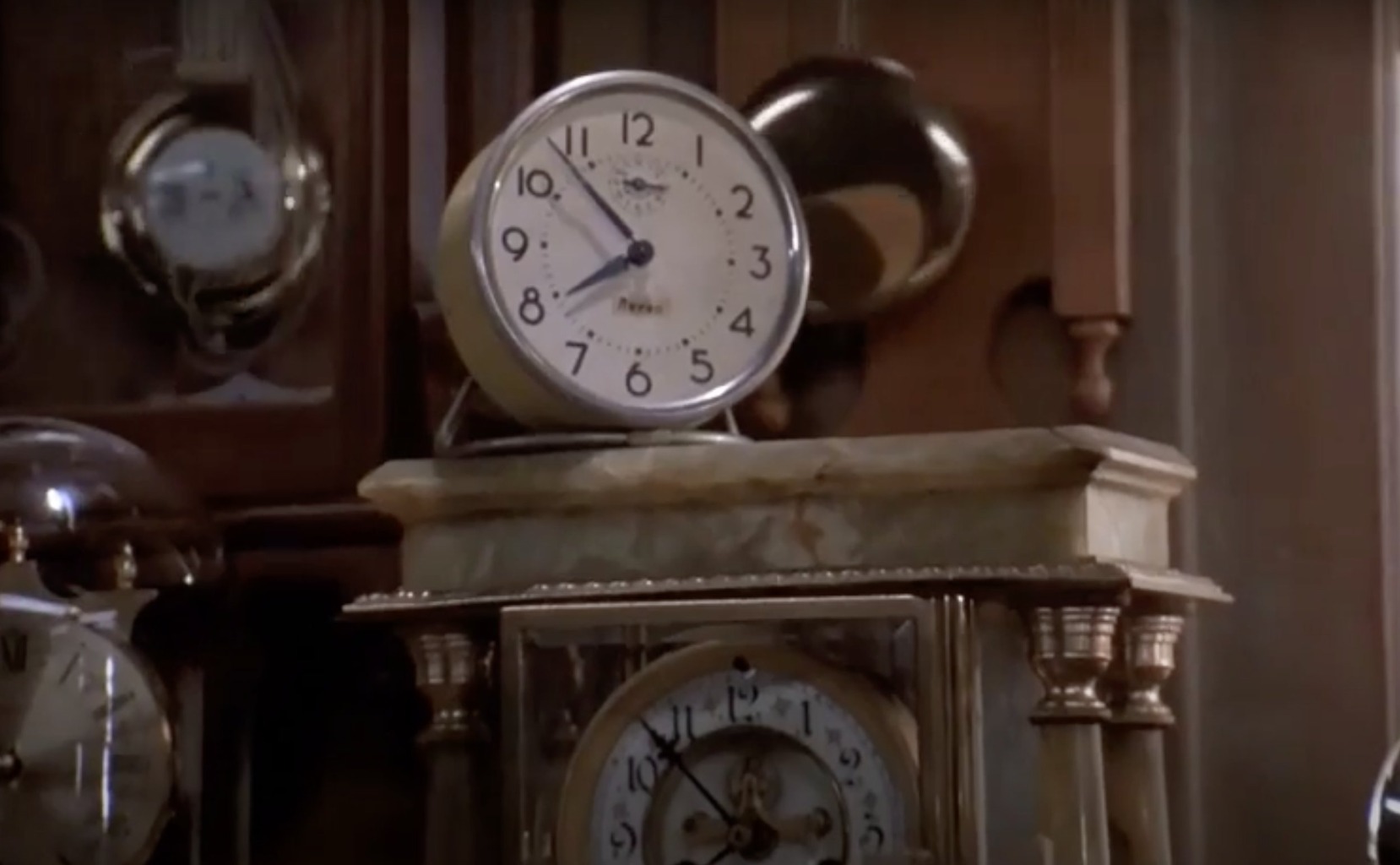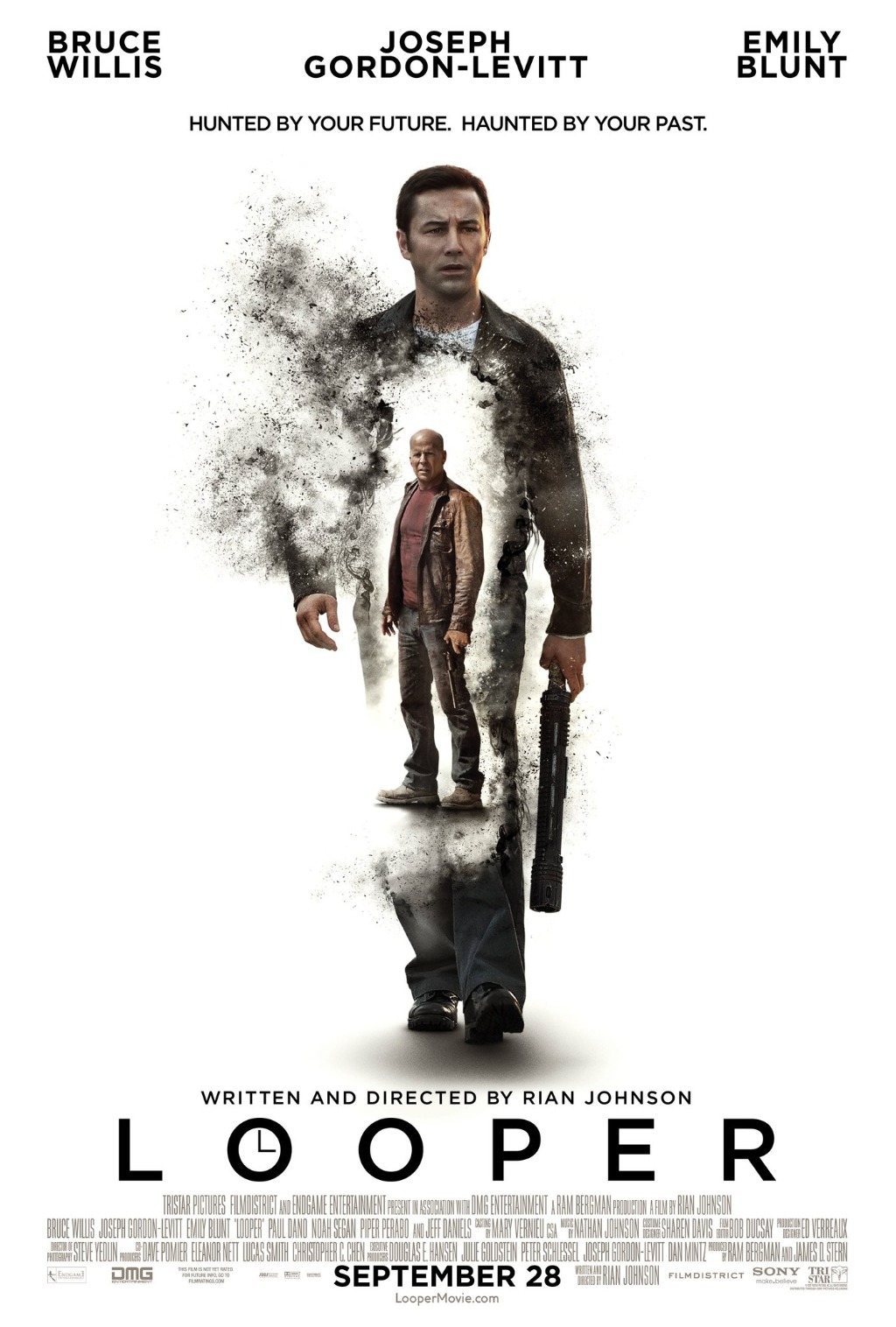Once again we are delving into the fascinating world of time travel, only this time with movies rather than TV shows. A film is a great medium for featuring time travel since it allows creators to tell full stories with a fixed beginning, middle, and end. This can make it a bit easier to keep track of different timelines and such.
There are so many fantastic time travel movies that I had a hard time narrowing this list down to just three. Groundhog Day is definitely an honorable mention—some may see it as more of a time loop than a time travel movie, but it still teaches plenty of great time-travel-y lessons about what a person might (and ultimately should) do if given the chance to do a day in their lives differently. Edge of Tomorrow is another fantastic time loop film.
But let’s get down to strictly time travel movies—films with characters who move backward and forward in time, usually intentionally (as opposed to time loops where characters repeat a fixed period of time over and over, often against their will). Here are three time travel movies you can study to improve your writing.

Back to the Future: A Lightning-Fast Pace
Where to watch it: Peacock
When you think of time travel movies, there’s a good chance that this 1985 film is the first one that comes to mind. Marty McFly and his pal mad scientist Doc Brown have become iconic—so much so that the popular cartoon Rick and Morty was inspired by them. It’s an extremely fun movie that doesn’t take itself too seriously and does it all at a breakneck speed.
The film begins in a room full of clocks of various styles. There are framed newspaper clippings on the wall with headlines that read, “BROWN MANSION DESTROYED” and “BROWN ESTATE SOLD TO DEVELOPERS”. The place is decidedly ill-kempt, with a coffee pot that suddenly starts and spurts water right onto the burner since the pot is gone. A reporter on the news on the television says that officials at the Pacific Nuclear research facility have denied the rumor that a case of missing plutonium was stolen from their vault two weeks earlier. A Libyan terrorist group claimed responsibility for the alleged theft. But now officials attribute the discrepancy to a clerical error.

Meanwhile, the doorbell buzzes, and burnt toast pops in and out of the toaster. A machine opens and serves a can of dog food and tosses the can in the trash. Marty, holding his skateboard, uses the key under the mat to enter, calling for Doc and his dog, Einstein. We can see that there is a case of plutonium under Doc Brown’s bed. Marty flicks several switches and dials and plugs in his guitar in front of a gigantic speaker. When he tries to play he causes an explosion and gets thrown backward. An alarm goes off and Marty answers a phone call from Doc. Doc tells him to meet him and Twin Pines Mall at 1:15 AM because he made a major breakthrough and needs assistance.
This opening does an excellent job of getting straight to the point. So much is communicated in just the first five minutes. The state of Doc Brown’s home tells us that he is brilliant, eccentric, fixated on clocks/time, and hasn’t been home for a while. We also learn that he has the plutonium that the nuclear research facility insists was never stolen (and Libyan terrorists tried to take credit for stealing). As soon as Marty is introduced, it’s clear that he is a cool and charismatic kid who is good friends with Doc. As a writer, you could learn a lot from this film about how to set the scene quickly and efficiently and get your story off to a rollicking pace.

Looper: Show, Don’t Tell
Where to watch it: Amazon Prime
A lot of time travel stories suffer from the need to heap on a bunch of clunky exposition at the beginning so people understand how the time travel works, its place in society, etc.. 2012’s Looper is a master class in what it means to show rather than tell. It is slick and efficient when it comes to introducing its world and characters.
We open on Joe sitting in a deserted field, checking a pocket watch. He wears headphones and speaks along with a French language lesson. A short distance away from him, a tarp is laid out. He looks at the time again, stands, takes out his headphones, and aims a gun at the tarp. A man with a sack over his head suddenly appears on the tarp and Joe shoots him dead. In a voiceover, Joe explains that time travel has not yet been invented, but thirty years from now it will have been. It will be instantly outlawed and used only in secret by the largest criminal organizations. Meanwhile, Joe rips open the back of the corpse’s shirt to find a pack of silver bars.

Text onscreen tells us it’s Kansas 2044. Joe takes the corpse in his truck—his voiceover explains that it’s nearly impossible to dispose of a body in the future. So when criminal organizations in the future need someone gone, they use specialized assassins in the past called loopers. His employers in the future nab the target, then zap him back to Joe. The target appears with his hands tied and head sacked and Joe does the rest so he can collect his silver. So the target has vanished from the future, and Joe’s disposing of a body that doesn’t exist in his time. He enters a building and drops the body down into a furnace.
This is less than three minutes into the film and the audience has already learned so much. The movie begins with the epitome of show, don’t tell—we see Joe get ready and shoot this man with no context whatsoever. Joe does explain everything through voiceover, but it is so elegantly concise. Not a word is wasted in telling us about what Joe does, who he works for, and what his world—and the world that is further into the future—are like. This is a great movie with some wonderful performances that you can enjoy just for entertainment’s sake, but you should also keep a close eye on how often this film skips over exposition in favor of showing rather than telling.

About Time: Focus on Family
Where to watch it: Amazon Prime (rent for $3.99)
This very sweet 2013 film was written and directed by Richard Curtis, the mind behind Four Weddings and a Funeral and Notting Hill. About Time focuses on Tim, a man in his early twenties who learns that he possesses the ability to back in time, and becomes determined to use this power to find a girlfriend. It is a very family-focused story, particularly on Tim’s relationships with his father, sister, and eventual wife. Though it is a very different sort of film, About Time resembles Looper in how concisely it is able to introduce its characters and how its version of time travel works.
The film begins with Tim introducing the members of his family through voiceover—himself (“too tall, too skinny, too orange”); his solid, unsentimental mother; his father, a former professor who always seems to have time for a leisurely chat or a game of table tennis; his Uncle Desmond (“the most charming and least clever man you could ever meet”); and Kit Kat, his elfin sister with eternally bare feet who is about the most wonderful thing in the world to Tim. The family regularly has tea together on the beach and watches a movie outside each Friday. Then we see Tim at a New Year’s Eve party where he clearly wants to kiss his friend at midnight but ends up shaking her hand instead.

The next day he goes into his father’s office where, now that Tim is twenty-one, his father reveals that the men in their family have always had the ability to time travel. They can only travel backward, and within their own lives to places they have already been. All Tim has to do is go into a dark place, clench his fists, and think of the moment he’d like to travel back to. Not believing a word, Tim gets in a closet to attempt time travel. He arrives in a bedroom closet at the New Year’s Eve party the night before in the same clothes he wore then and proceeds to kiss his friend at midnight like he wanted to the first time. He gets back into the closet, clenches his fists, and arrives back at home the next day in the clothes he was wearing before. His father asks him what he will do with his power and Tim says he plans to try to get a girlfriend.
It makes sense that a film centered around familial relationships would introduce the family right away. In just a few short lines of voiceover, we get a great sense of who each person in Tim’s family is and his relationships with each of them. The issue of explaining time travel is also done quickly and concisely. Within the first ten minutes of the film, we already have a colorful cast of characters, rules for how time travel works, and the protagonist’s goal. If you don’t want to shell out the four dollars to rent the film on Amazon Prime, you can study the first ten minutes here. I highly recommend watching the whole movie though—it’s simply lovely and will teach you so much about developing deep familial relationships in your own work.
Time travel may be hard to write about in a novel but it has been a blast writing these two blog posts about time travel TV shows and movies. Whether you’ve seen them before or not, watching or rewatching these shows and movies can teach you a great deal about writing—be your story about time travel or something else entirely.
If you’d like to read about more TV shows and movies you can study to improve your writing, here are the other posts in the series:
- 3 TV Shows You Can Study to Improve Your Writing
- 3 Movies You Can Study to Improve Your Writing
- 3 More TV Shows You Can Study to Improve Your Writing
- 3 More Movies You Can Study to Improve Your Writing
- TV Shows You Can Study to Improve Your Writing, Part 3
- Movies You Can Study to Improve Your Writing, Part 3
- 3 Holiday Movies You Can Study to Improve Your Writing
- 3 Fairy Tale Movies You Can Study to Improve Your Writing
- 3 TV Shows You Can Study to Improve Your Worldbuilding
- 3 Movies You Can Study to Improve Your Worldbuilding
- 3 Horror TV Shows You Can Study to Improve Your Writing
- 3 Horror Movies You Can Study to Improve Your Writing
- 3 Time Travel TV Shows You Can Study to Improve Your Writing
Soak Yourself in Fiction
Follow us on Facebook | Instagram | Twitter | Discord